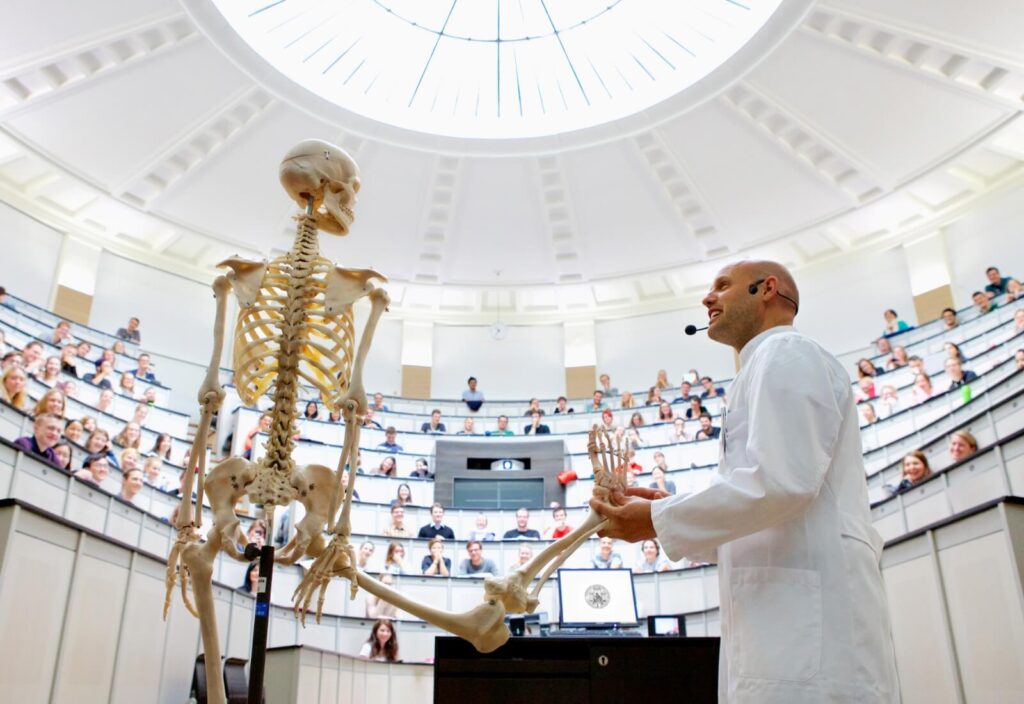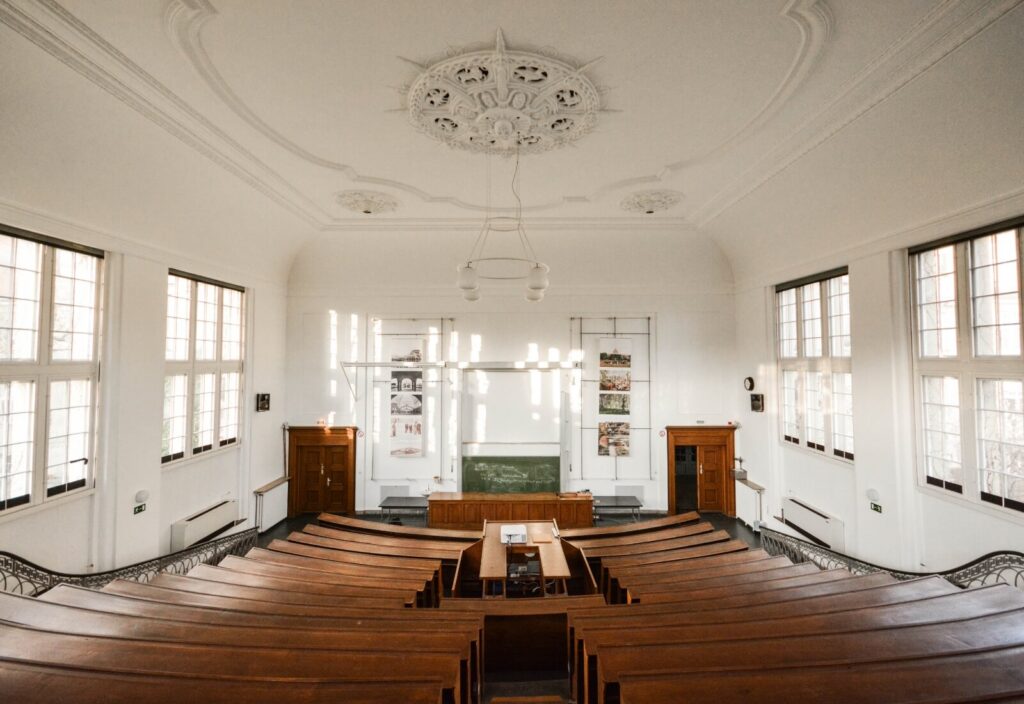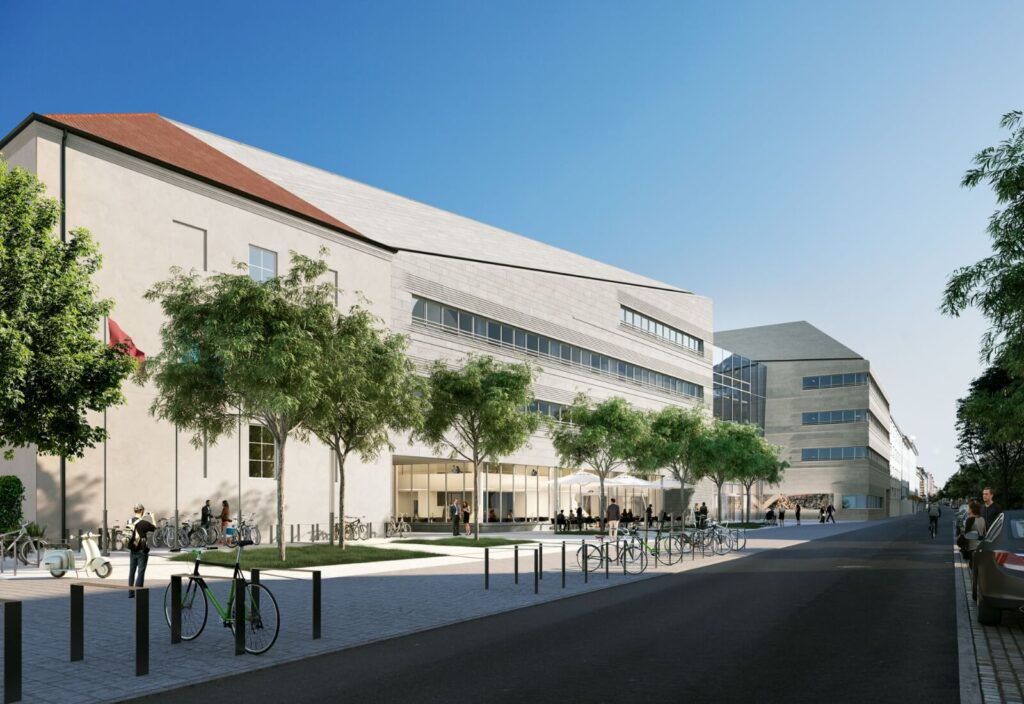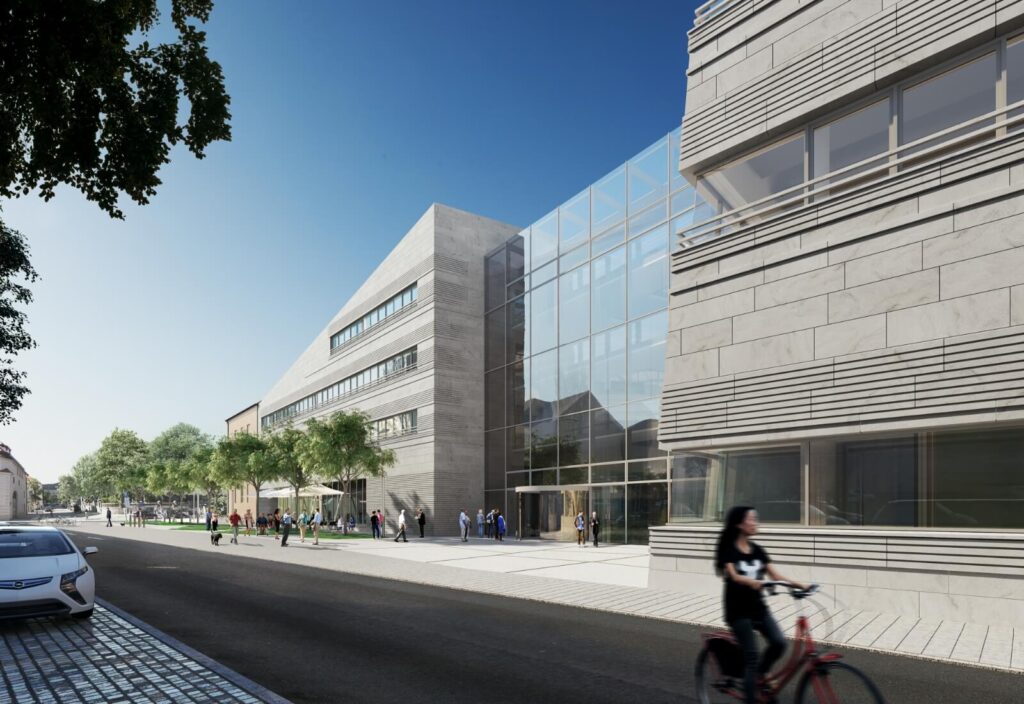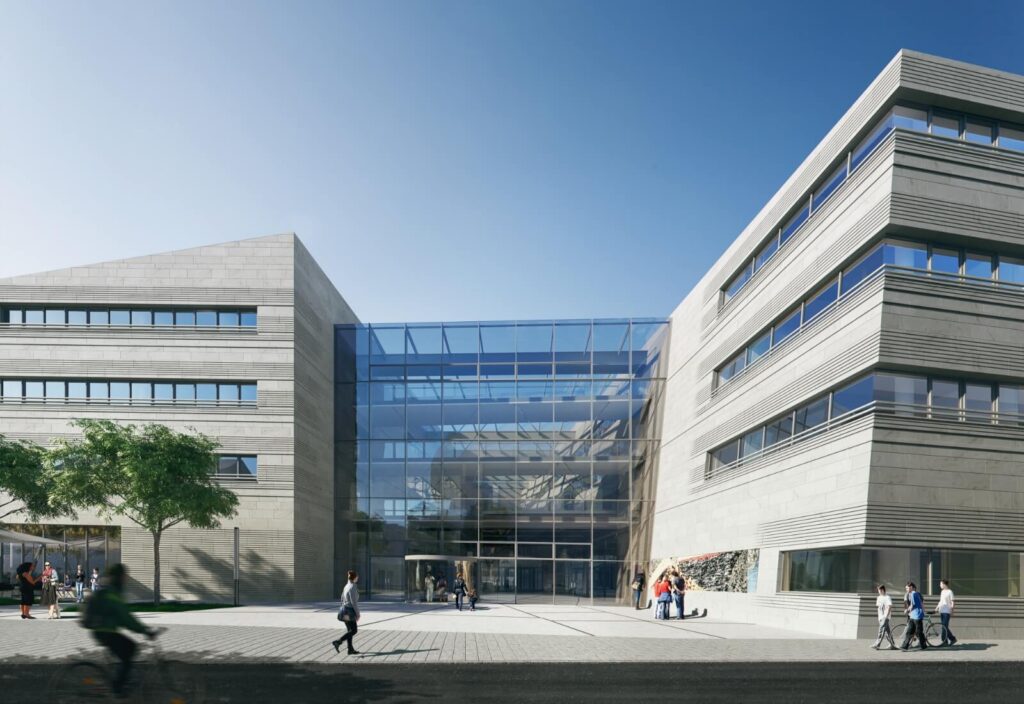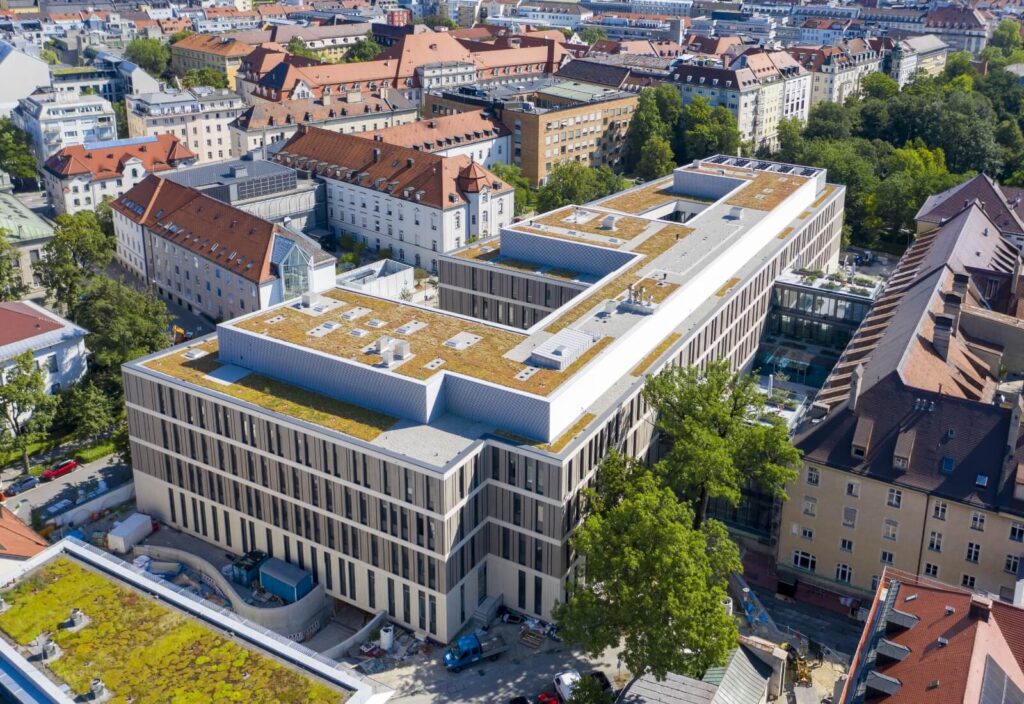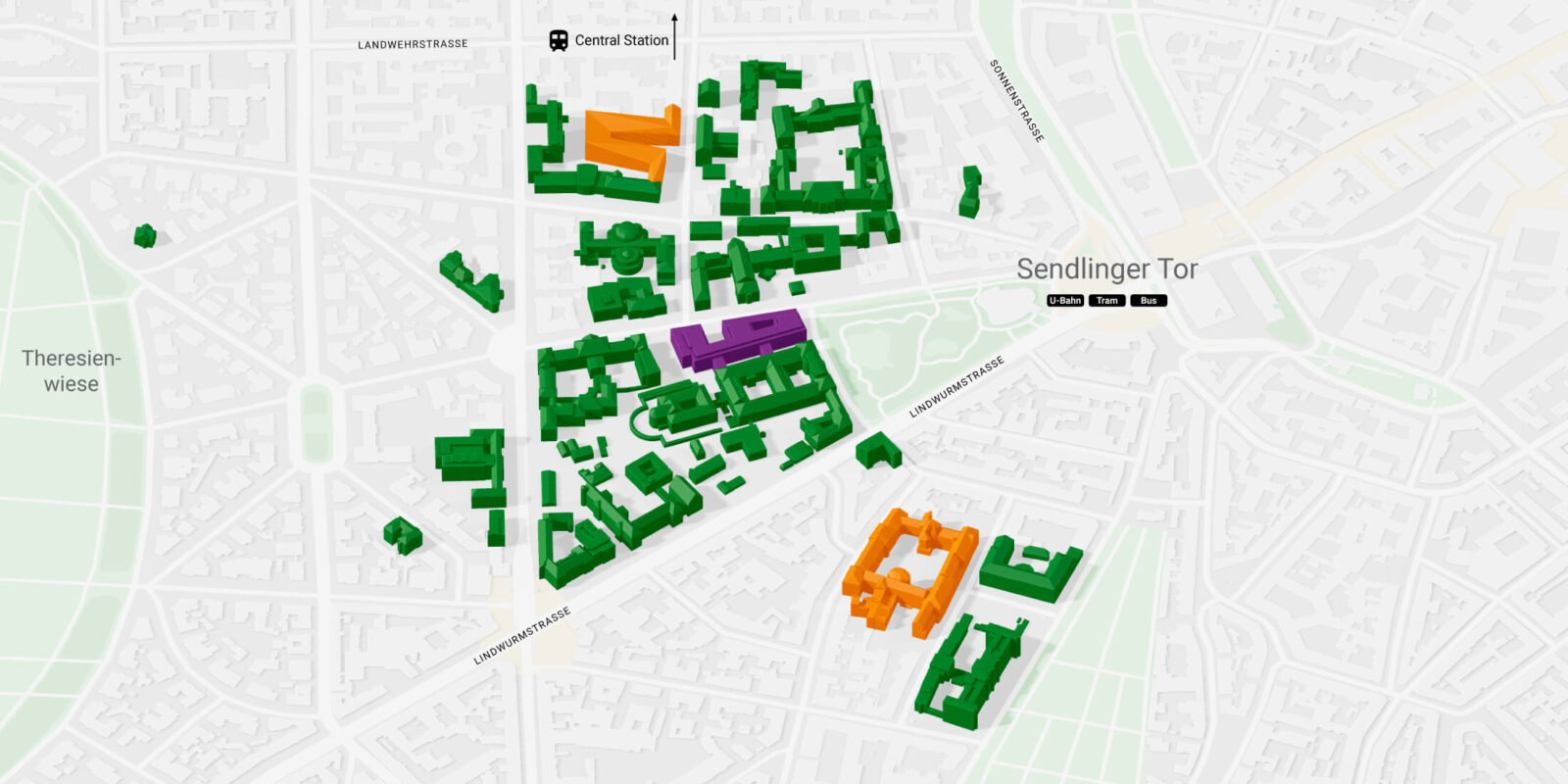
Campus Sendlinger Tor
The area between Sendlinger Tor and Goetheplatz has been informally known as the Medical Quarter for over 200 years. Several institutes and facilities of the Faculty of Medicine are located here, along with numerous clinics, which have shaped the character of the district.
In addition to the Institute of Ethics, History and Theory of Medicine, the Institute of Anatomy, the Institute of Medical Psychology, and the Institute of Pathology, there is the Walther Straub Institute of Pharmacology and Toxicology, the Max von Pettenkofer Institute for Hygiene and Medical Microbiology, and the Institute of Forensic Medicine. Meanwhile, the LMU University Hospital campus is home to clinics for ophthalmology, otolaryngology, child and adolescent psychiatry, psychiatry and psychotherapy, dental medicine, oral and maxillofacial surgery, dermatology and allergology, as well as Dr. von Hauner Children’s Hospital and the new LMU University Hospital City Center facility.
Campus Sendlinger Tor is set for further expansion. There are plans for a new Earth and Environmental Sciences building and to gather together the various departments and disciplines of the Faculty of Mathematics, Informatics and Statistics in one place.
LMU University Hospital is also pursuing ambitious plans to further develop its infrastructure. In 2021, for example, the state-of-the-art LMU University Hospital City Center opened its doors. The new facility brings various disciplines together at one location and serves as an initial point of contact for outpatients and short-stay inpatients. Over the next few years, moreover, the renowned Dr. Von Hauner Children’s Hospital at LMU University Hospital is due to move out of the city center to a new home on Campus Grosshadern, where it will be the most modern and best equipped children’s hospital in Europe.
Earth and environmental sciences
By the year 2029, the Department of Earth and Environmental Sciences, which was formerly scattered across multiple locations in Munich, will be brought together in a state-of-the-art building. The subjects of geology, paleontology and geobiology, mineralogy, crystallography, and geophysics will move to a new building at Schillerstrasse 42, 44, and 46, uniting them with the Bavarian state collections in the geosciences for the first time. This constellation, which is unique in Germany, provides a strongly interdisciplinary setting for research and teaching so that top-level scientific insights about Planet Earth can be discovered and conveyed to students.
However, the new building will be more than just an ensemble of lecture halls and laboratories. As a “geosciences forum,” it will afford a glimpse behind the scenes of modern research and teaching and make science a vivid, tangible experience – for visitors, but also for students and researchers. In particular, this includes interactive workshops, guided tours, special talks and lectures, exhibitions, and a contact point for information and the analysis of new geological finds, which are regularly discovered by ordinary citizens. The intention is to create living dialogue between science and the public, with the goal of fostering exchange on relevant subjects and absorbing fresh ideas.
News from the earth and environmental sciences
With floor space of approximately 17,000 square meters, the new building will have room for around 520 students and around 140 researchers.
Mathematics, informatics, and statistics
Over the coming years, LMU’s Faculty of Mathematics, Informatics and Statistics will be getting a new home in the historical building ensemble at Maistrasse 11. This was where LMU University Hospital’s Clinic of Obstetrics and Gynecology was situated for over a century. The faculty’s facilities were previously scattered over four different locations. Now the faculty, which, uniquely among German universities, encompasses the subjects of mathematics, informatics, and statistics, is also bringing them together geographically in a single building in the city center.
The history-steeped building will be thoroughly renovated by 2035, although without major structural alterations. After the works have been completed, the large art nouveau lecture hall and the magnificent library room will serve the same function as before. The church with its rich Baroque Revival interior will also be preserved, while the idyllic inner courtyard will offer a pleasant respite from everyday bustle.
The new building will offer students and academics an ideal space for research, study, and cross-disciplinary networking. In addition, there are plans for various public outreach measures, such as a schools portal and opportunities to network with high-flyers from the spheres of business, advanced technology, and research.
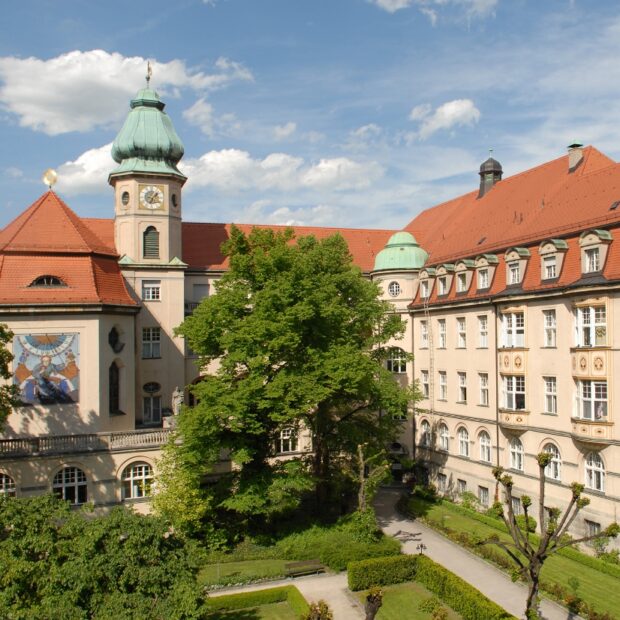
Interior courtyard of new location of LMU’s Faculty of Mathematics, Informatics and Statistics, formerly the Clinic of Obstetrics and Gynecology, on Maistrasse.
© LMU University Hospital
LMU University Hospital City Center
Since opening in 2021, the state-of-the-art downtown location of LMU University Hospital at the corner of Ziemssen-/Nussbaumstrasse has served as the first point of contact for outpatients and short-stay inpatients.
On the ground floor, there is an interdisciplinary emergency department with a trauma room and catheterization laboratory along with various diagnostic areas. Specialists in cardiac and pulmonary vascular diseases, endocrine and abdominal diseases, surgery, rheumatic diseases, and obstetrics work together across four stories. There is also a new interdisciplinary intensive care unit, which was created by merging the surgical and medical ICUs.
As well as providing outstanding treatment and care to the highest scientific level, the site is a center for innovative clinical research and offers practical training for medical students and trainee midwives.
Go to LMU University Hospital City Center website


